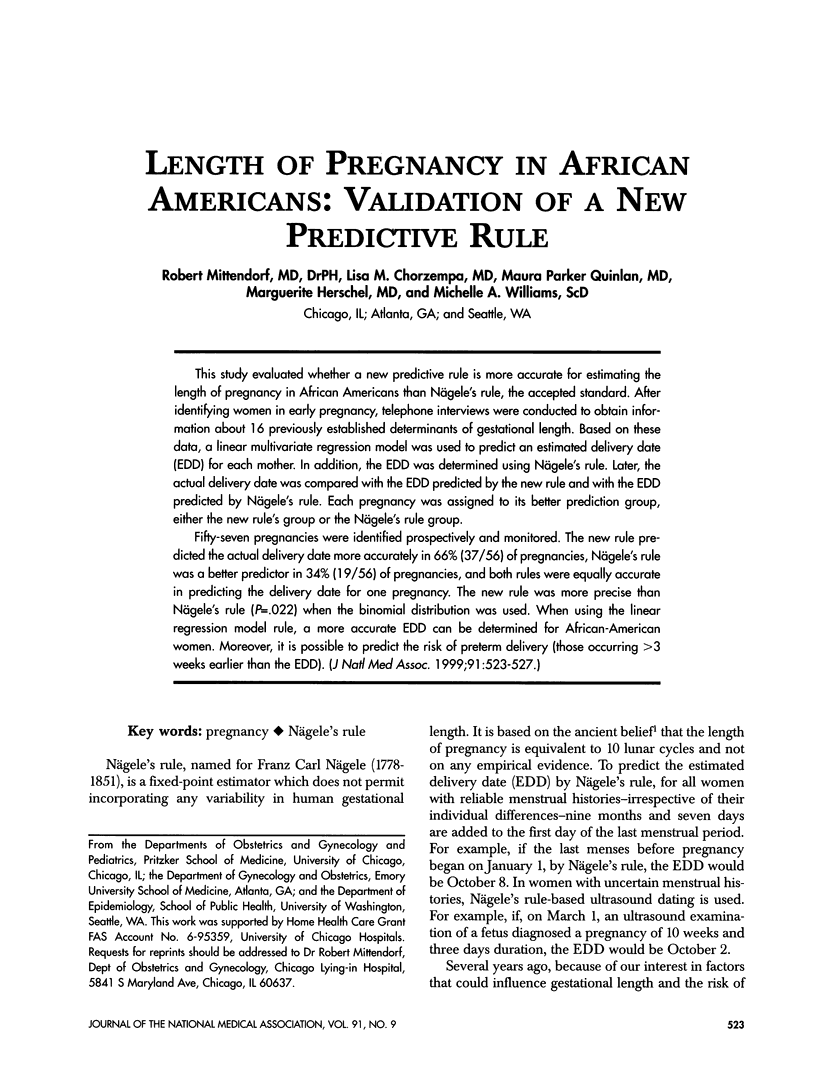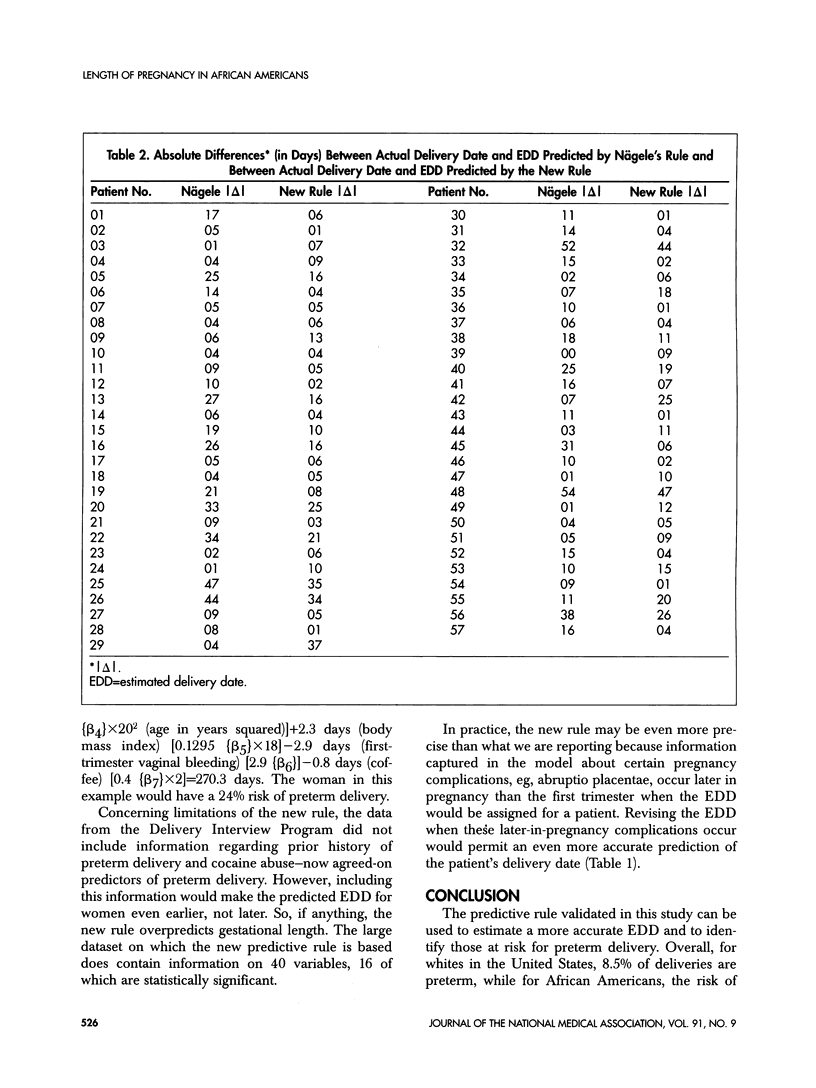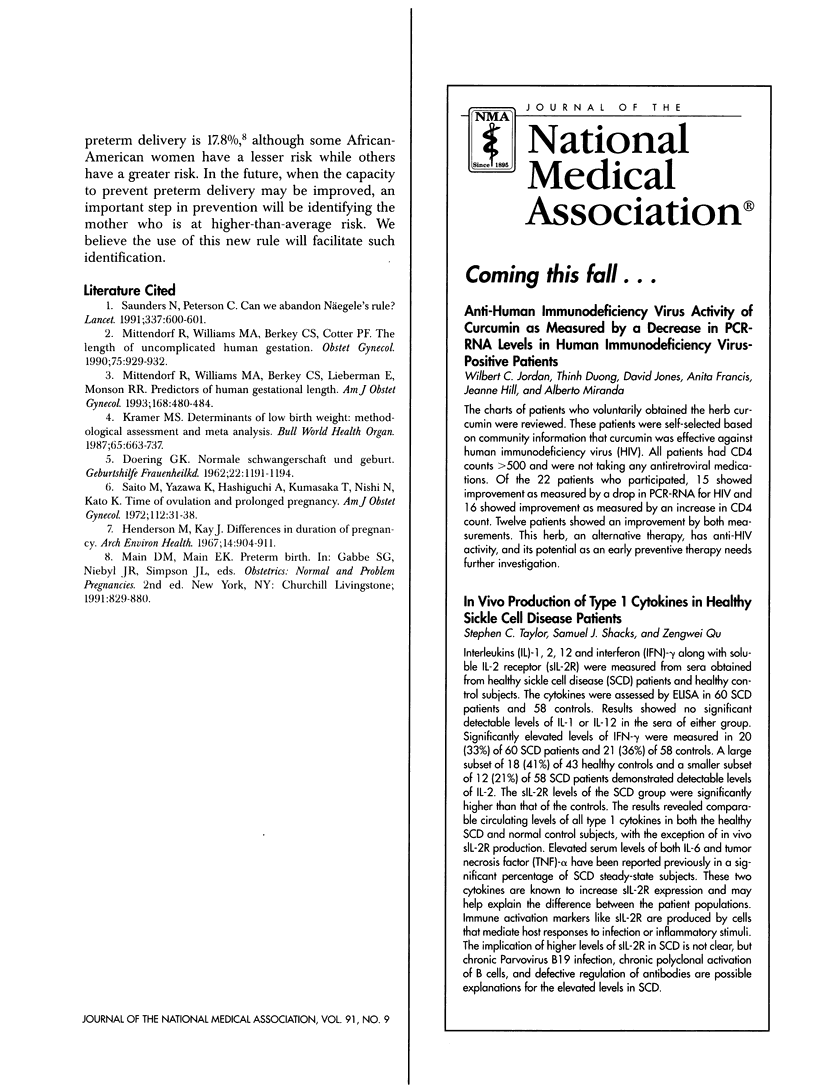Abstract
This study evaluated whether a new predictive rule is more accurate for estimating the length of pregnancy in African Americans than Nägele's rule, the accepted standard. After identifying women in early pregnancy, telephone interviews were conducted to obtain information about 16 previously established determinants of gestational length. Based on these data, a linear multivariate regression model was used to predict an estimated delivery date (EDD) for each mother. In addition, the EDD was determined using Nägele's rule. Later, the actual delivery date was compared with the EDD predicted by the new rule and with the EDD predicted by Nägele's rule. Each pregnancy was assigned to its better prediction group, either the new rule's group or the Nägele's rule group. Fifty-seven pregnancies were identified prospectively and monitored. The new rule predicted the actual delivery date more accurately in 66% (37/56) of pregnancies, Nägele's rule was a better predictor in 34% (19/56) of pregnancies, and both rules were equally accurate in predicting the delivery date for one pregnancy. The new rule was more precise than Nägele's rule (P = .022) when the binomial distribution was used. When using the linear regression model rule, a more accurate EDD can be determined for African-American women. Moreover, it is possible to predict the risk of preterm delivery (those occurring > 3 weeks earlier than the EDD).
Full text
PDF




Selected References
These references are in PubMed. This may not be the complete list of references from this article.
- DOERING G. K. [On the gestation period post ovulation]. Geburtshilfe Frauenheilkd. 1962 Oct;22:1191–1194. [PubMed] [Google Scholar]
- Henderson M., Kay J. Differences in duration of pregnancy. Negro and white women of low socioeconomic class. Arch Environ Health. 1967 Jun;14(6):904–911. doi: 10.1080/00039896.1967.10664859. [DOI] [PubMed] [Google Scholar]
- Kramer M. S. Determinants of low birth weight: methodological assessment and meta-analysis. Bull World Health Organ. 1987;65(5):663–737. [PMC free article] [PubMed] [Google Scholar]
- Mittendorf R., Williams M. A., Berkey C. S., Cotter P. F. The length of uncomplicated human gestation. Obstet Gynecol. 1990 Jun;75(6):929–932. [PubMed] [Google Scholar]
- Mittendorf R., Williams M. A., Berkey C. S., Lieberman E., Monson R. R. Predictors of human gestational length. Am J Obstet Gynecol. 1993 Feb;168(2):480–484. doi: 10.1016/0002-9378(93)90476-y. [DOI] [PubMed] [Google Scholar]
- Saito M., Yazawa K., Hashiguchi A., Kumasaka T., Nishi N., Kato K. Time of ovulation and prolonged pregnancy. Am J Obstet Gynecol. 1972 Jan 1;112(1):31–38. doi: 10.1016/0002-9378(72)90525-x. [DOI] [PubMed] [Google Scholar]
- Saunders N., Paterson C. Can we abandon Naegele's rule? Lancet. 1991 Mar 9;337(8741):600–601. doi: 10.1016/0140-6736(91)91653-c. [DOI] [PubMed] [Google Scholar]


